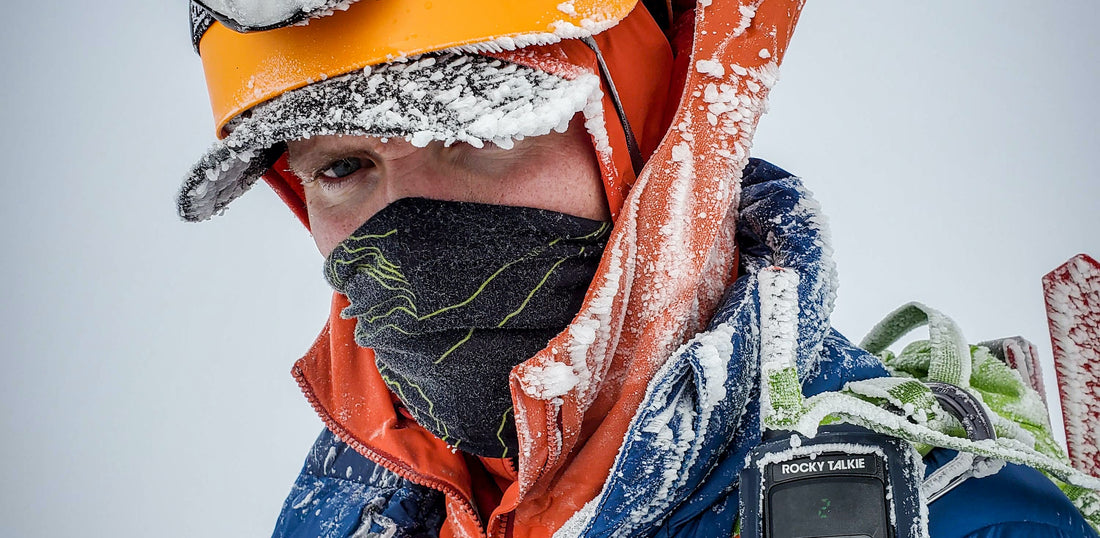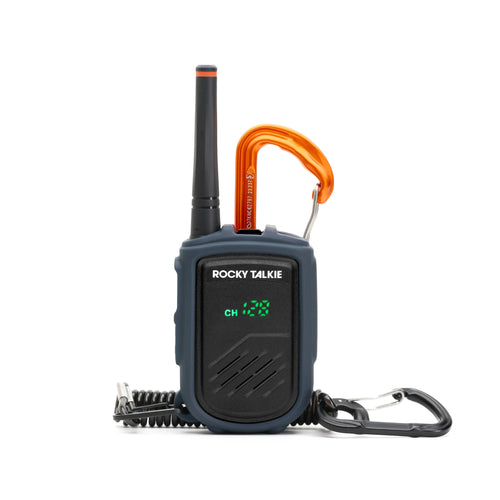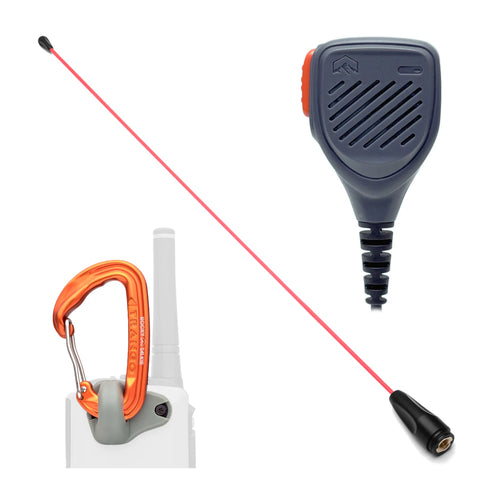
Trapped in a Crevasse on Mt. Baker
| 6 min readTaylor Gibler was hurtling downhill, sliding out of control on steep snow, but he wasn’t worried. He’d just taken a bad slip while descending the southern flank of Washington’s Mount Baker, but he’d self-arrested dozens of times before. He had no reason to think this time would be any different.
Gibler flipped over, dug the pick of his ice axe into the snow, and leaned in hard.
But the snow was wet and loose. His pick cut straight through, as effective as a tent stake in liquid water. Gibler was picking up speed, hurtling toward the rocks below, and there was nothing he could do.
The last thing Mat Collins saw was Gibler’s body ricocheting off a boulder, ragdolling airborne, and disappearing into the fog.
Collins stared.

Low visibility plagued Gibler and Collins during their June 29 ascent of Mt. Baker.
Collins and Gibler were regular climbing partners, but Gibler was the more experienced one, and had climbed Mt. Baker before. The two had set out around 6 p.m. the previous day, planning to hike through the night and summit by dawn. Despite intermittent rain, whiteout conditions, and deep snow, they’d made pretty good time, topping out a little after 8:00 a.m. The only issue had been the crevasses.
It was early season, which meant snow heaped over the Easton Glacier’s open cracks, hiding them from view. The whiteout didn’t help, either. The two had traveled as a rope team, carefully following a GPS track, with about 30 feet of rope between them. If one of them plunged through a snow bridge into a crevasse, the other would self-arrest, preventing a serious fall. So far, this had only happened once.
Gibler had been leading the descent, his nose to the GPS track, when the rope snapped tight. He turned. Nothing. Just gauzy white mist in every direction.
Gibler pulled out his ice-encrusted Rocky Talkie.

Gibler had to use the tip of his ice axe to press buttons on his frozen GPS device. The climbers faced rain and temperatures as low as -20°F with wind chill.
“Are you okay? Do you need help?” he radioed. Collins’s reply came quickly: “No, I’m good.”
Collins climbed out of the crevasse without incident. They kept moving. By the time they reached the Railroad Grade Moraine, a ridge of glacially deposited rock only a few miles from the trailhead, they started to relax. They took off their helmets and crampons. They’d made it off the glacier in one piece, and it was all easy walking from here.
Then Gibler’s foot slipped on something. A rock, a patch of wet snow—it didn’t matter. What did matter was that the Railroad Grade Moraine had about a 1,000-foot drop-off on either side. And he was covering that distance fast.
He slid about 50 feet before he felt the rush of air as his body bounced off a boulder and shot into the air. For a moment, he seemed to hang in the mist. Then, SLAM.
He’d stoppede. Gibler could hear water. He opened his eyes and blinked through the icy waterfall pouring over him. He looked around. To one side: a sheer wall of rock. To the other, a 30-foot curtain of blue ice. He had fallen into a crevasse.
Gibler’s Rocky Talkie crackled to life. It was Collins.
“Where are you? Are you hurt?”
Gibler fumbled for his GPS and radioed in his coordinates. “I’ve broken my arm in multiple places,” he added, guessing at what turned out to be a broken humerus, a dislocated shoulder, internal bleeding, a bad concussion, and a handful of ruptured tendons. “But my legs are OK. I think I can walk.”
Gibler had broken other bones in the past, but he’d never experienced pain like this. As he struggled to free the shattered arm from his backpack strap, his vision began to fade. Then, he started to lose consciousness.

Gibler's Rocky Talkie allowed him to share his GPS coordinates with his partner before losing consciousness. He was able to retrieve the radio from under the bergschrund waterfall a week later. It still works.
I’m dying. Gibler was sure he had a head injury, that his brain was short-circuiting. He tried to fight it, but within seconds, he’d blacked out.
Meanwhile, Collins picked his way downhill as fast as he could, radioing his friend every few minutes. Now, though, he was getting no response. After about half an hour, he finally found the lip of the bergschrund. At the bottom, 30 feet below, lay his friend—twisted, soaked, and unconscious. Collins started screaming.
After a few minutes, Gibler blinked open his eyes. He realized he was freezing.
Gibler pulled his rainshell hood over his head to keep in some warmth, then, after some delirious arguing, followed Collins’ instructions and pressed the S.O.S. button on his Garmin.
In theory, help was on the way. But the reality was that Gibler had no idea if the signal had made it out of the crevasse, and no idea when help would arrive if it had. And in the meantime, he was slowly freezing to death. I know if I wait in this hole for rescue, I’m going to die, he remembers thinking. He struggled to a stand.
Gibler tried to put on his harness and crampons, but his arm was useless. Eventually he found a soft spot in the wall of the bergschrund, kicked steps with his mountain boots, and painstakingly climbed the sheer wall with his one good arm. When he neared the edge, Collins reached down with the adze of his ice axe and Gibler grabbed hold. His partner yarded him over the lip and the two fell back into the snow, relieved.
The feeling didn’t last long. Gibler was shaking with cold, and his feet were well past numbness.
The two began descending, thinking they could get down via the Squak Glacier, a nearer but more technical route. But before they'd gone too far, Gibler stopped. He had no harness—they'd have to cross unroped. He couldn't risk another crevasse fall.

Mat Collins, Gibler's partner, carved steps for him for over 1,000 vertical feet.
“Besides, if search and rescue is coming, they’ll come up the trailhead we started on. We need to get back to that trail,” Gibler said. By then they'd come into view of a steep slope of ice and snow. It would be difficult, but it was the only way to get back to the trail without risking further crevasse danger. “That’s our route back.”
Collins blanched. He started to protest, but Gibler shook his head again.
“I can’t wait for search and rescue to come find us. We have to go. Now.”
For nearly 1,000 vertical feet, Collins cut steps with his ice axe, and Gibler ascended carefully in his bare mountain boots. After what felt like hours, they topped out.
As he stepped onto the trail, Gibler felt his body relax for the first time: He knew he was going to live.
On the way down, the two ran into a mountain rescue team which escorted them to the trailhead. Gibler was rushed to the hospital and treated for his injuries. He’s now well on the road to recovery.
5 Tips for Safer Glacier Travel
The Rocky Talkies team is composed of experienced climbers and mountaineers. Here’s what we’ve learned over the years to mitigate risk during glacier travel.
-
Learn the skills. Before you venture onto glaciated terrain, make sure you’re well versed in self-arrest, reading the terrain, traveling as a rope team, and performing crevasse rescue procedures. (We recommend learning these techniques from a certified guide.)
-
Gather intel. Glacier conditions can change quickly as the ice shifts and cracks widen. As you plan your route, talk to locals, area guides, and previous climbers to get an idea for current conditions. Keep an eye on recent weather as well upcoming forecasts.
-
Pick a smart start time. Extreme cold can turn snow into boilerplate, making slips dangerous and self-arrest impossible. Unconsolidated snow or slush can also be dangerous. Time your climb such that you have favorable conditions on both the ascent and descent. Set a hard turnaround time to ensure you don’t overshoot your window.
-
Carry reliable navigation equipment. If you can get a GPS track from a previous climber, use it to inform your route. Pack a GPS device or reliable phone app, and consider bringing a backup means of navigation in case of glitches or dead batteries. Also make sure you have a communication plan in case you get separated or lose visibility.
- Keep your guard up. Even off the glacier, consider keeping your helmet on and your ice axe out; melting can make rockfall a serious hazard, and slips are always a possibility.














Leave a comment (all fields required)
Comments will be approved before showing up.